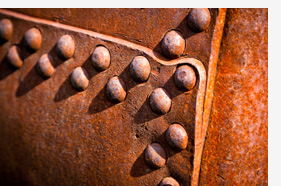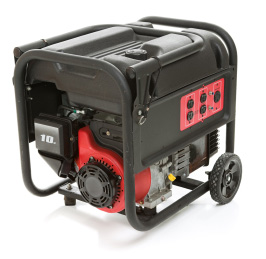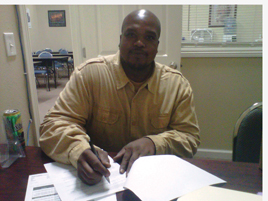Available Courses
-
CSLB Exam Prep Classes
- In-School Law & Trade
- Law & Business Online
- Home Study Law & Trade
- Crash Course
- Test Taking Skills
- Construction Math Review
-
Seminars & Continuing Ed
- Blueprint Reading Seminar
- California Electrical Cert.
- EPA - RRP Certification
- Mold Remediation
- Home Inspection Course
- ICC Certification
-
- Online Practice Exam for CA State License Exam
- Online Companion Guides for CA State License Exam
- TRY NOW! Online Practice Exam Demo
-
Clases de Español
-
Contractor Business Services
- Meet our Instructors
- Online Store
Newsletter

CSLS Construction Connection
Contractors State License Services is committed to the continued growth and education of your career as a licensed contractor. It is our intention to provide you with valuable information of what's new in the construction industry, important events that you may want to attend, and helpful business and exam preparation tips. You can also stay connected with CSLS through Facebook, Twitter, LinkedIn and You Tube.IN THIS ISSUE
DECEMBER 2011- Drop the Rust
- Generator Dangers
- CSLS Honors Creadell Pete Polee III with a Scholarship
- Tool Care: Preventing Rust
- Words of Wisdom
- Referral Program
Drop the Rust
 Winter is here, tools will be getting wet, and rust is but a drop away. Left to its own natural tendencies, iron oxide, the red rust we all know and hate can ruin our tools and appliances and shouldn’t be taken with a grain of salt.
Winter is here, tools will be getting wet, and rust is but a drop away. Left to its own natural tendencies, iron oxide, the red rust we all know and hate can ruin our tools and appliances and shouldn’t be taken with a grain of salt.
Rust is the result of a simple molecular process between iron, moisture and air. When a drop of water lands on iron, the water molecules mix with carbon dioxide in the air forming a light acid (think baking soda and vinegar), then picks away at the weaker alloys within the iron. A little molecular restructuring goes on between the elements and the alloy particles are split up. Changes between negative and positive ions result in an iron oxide buildup which, if unheeded, will continue to grow until the layers flake and disintegrate. The pitting you see in a knife blade is a result of the electrochemical reaction of the lifting away of the weaker alloys within the steel.
The rust you see is something you can guard against, the rust you can’t see can be deadly. As rust accumulates, its volume increases. In 1983 the Mianus River Bridge collapsed when an internal bearing was so badly rusted it’s mass literally dislodged a bridge support from its slab. You see the same type of obvious corrosion build-up on nuts and bolts.
There are many grades of metal on the market which serve various uses and are affected differently by rust. From the bit you buy to the girder you install, the type of metal used should always be an important consideration in any construction project.
The corrosion process for every metal depends on its makeup of alloys. The aluminum oxide buildup on aluminum actually adheres to the aluminum and forms a protective barrier, unlike iron oxide rust which flakes off leaving the metal beneath open to further attack. Copper’s reaction to the elements of water and air causes an oxidation which forms over the copper creating what is called a ‘patina’. This layer of corrosion which sits on the surface, shields the copper below from further deterioration. Stainless steel metals are also available with rust resistant additives, such as chromium and nickel.
With proper attention however, rust can be prevented. Aside from the type of metal used, coatings, and other products on the market can help fight the battle of the rust. Keeping tools dry and out of the elements however is truly your first line of defense. Generators are convenient for temporary electric power but they can also pose hazards. Carbon monoxide poisoning, electric shock and fire are all dangers to take into consideration this winter or anytime you use a generator.
Generators are convenient for temporary electric power but they can also pose hazards. Carbon monoxide poisoning, electric shock and fire are all dangers to take into consideration this winter or anytime you use a generator.
Carbon monoxide is a colorless and odorless gas formed by compounds containing carbon which, because of lack of oxygen, do not burn completely. This is the same exhaust gas from car engines and is extremely poisonous and can be deadly. Every year people die in incidents related to carbon monoxide poisoning, most of them associated with portable generators being used indoors or in partially enclosed spaces. When used in a confined space, generators can produce high levels of CO within minutes. Remember, you cannot see or smell CO, but the danger of carbon monoxide poisoning can still exist even if exhaust fumes are present.
Follow these safety tips when using portable generators:
- Never use inside homes, garages, crawlspaces, sheds or other similar areas even when using fans, or opening doors and windows. The toxic gases build up quickly and can linger for hours after the generator has been shut down.
- Carefully read and follow the instructions that come with your generator.
- Always locate the generator outdoors and never allow CO to come indoors through doors, windows or vents.
- Carbon Monoxide alarms should be installed and batteries checked monthly.
- Get to fresh air right away if you start to feel dizzy or weak.
Generators also pose a risk of shock or electrocution especially if operated in wet conditions:
- Position generator under a tarp or other canopy-like structure and place on a dry surface only. Do not touch the generator with wet hands.
- When using an extension cord, be sure it is specifically approved for heavy duty outdoor use, free of defects and rated for the maximum wattage necessary.
- Keep all cords away from water and secured against potential damage or hazards.
- Never plug the generator into a wall outlet. This is extremely dangerous and presents an electrocution risk.
Fire Hazards:
- Turn generator off and allow cooling before refueling. Gasoline spilled on a hot engine could ignite.
CSLS Honors Creadell Pete Polee III with a Scholarship
 Creadell has received a scholarship for a CSLS In-School Law & Trade exam preparation program. He has been working in the industry for 20 years and now looks forward to getting his General B contractor’s license. He is currently unemployed and has hopes that getting licensed will open up opportunities so that he can better support his wife and nine children. Although Creadell is not currently fully employed he keeps himself busy with helping the community, just this last Thanksgiving he coordinated a group to cook a Thanksgiving feast that he and his family delivered it to the homeless. Good job Creadell! It’s nice to be able to give back to someone so generous.
Creadell has received a scholarship for a CSLS In-School Law & Trade exam preparation program. He has been working in the industry for 20 years and now looks forward to getting his General B contractor’s license. He is currently unemployed and has hopes that getting licensed will open up opportunities so that he can better support his wife and nine children. Although Creadell is not currently fully employed he keeps himself busy with helping the community, just this last Thanksgiving he coordinated a group to cook a Thanksgiving feast that he and his family delivered it to the homeless. Good job Creadell! It’s nice to be able to give back to someone so generous.
 Tool Care: Preventing Rust
Tool Care: Preventing Rust
Don’t let rust eat away at your tools.
- Keep tools dry. Water acts as the conduit between elements in the air and in the iron, and facilitates the process of rust formation
- Keep tools clean. Moisture collects in dirt and dust.
- Keep larger tools clean and dry using a breathable tarp or fitted cover that will allow air to circulate to avoid condensation.
- Store Silica packets along with tools
- Use a good dehumidifier
Displace moisture and discourage rust with proper application of one of the many products on the market such as:
- Paste wax (Creams may contain water)
- Spray lubricants (if used on wood working tools check for additives which may stain wood)
- Rust preventing paints
- Zinc based primers (available in aerosol)
Rust removal ideas:
- Loosen rust with sand paper or steel wool and seal with noncorrosive substance that presents additional rusting.
- Sand or bead blasting on larger affected areas of rust
- Rust converters such as RustX stops rust, but the metal will require further sealing with a rust inhibitor.
- Phosphoric Acid dissolves iron oxide (rust) leaving behind a thin coating of iron phosphate which helps prevent rust. Naval Jelly has concentrated Phosphoric acid. Coca Cola also contains enough to etch metal)
- Electrolytic rust removal bath requires emersion of affected metal, but unlike some acid treatments, does not compromise metal strength.
Words of Wisdom
There are so many people out there who will tell you that you can’t. What you have to do is turn around and say “Watch me.”
~ unknown
Referral Program
You can earn up to $50 through our Referral program for each referral you send that purchases one of our courses. Call for details on how to participate.
Call 888-900-2757 for details

